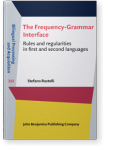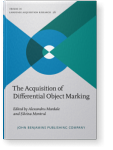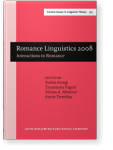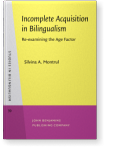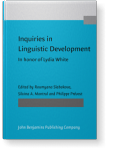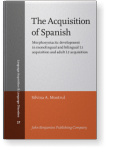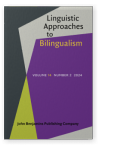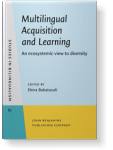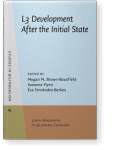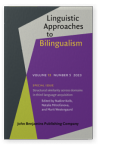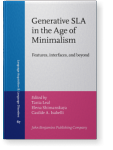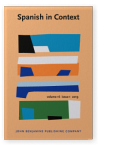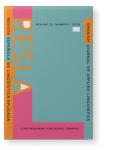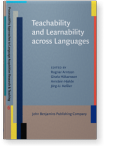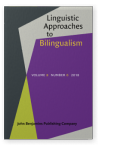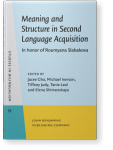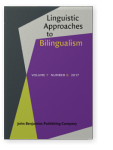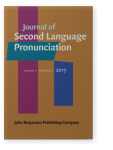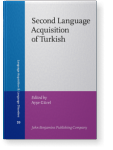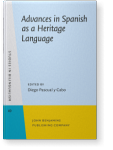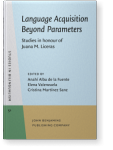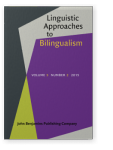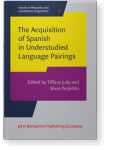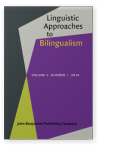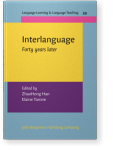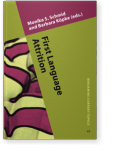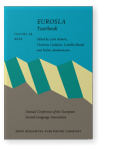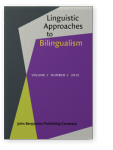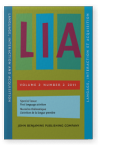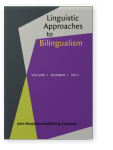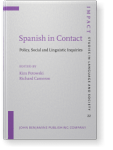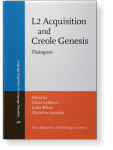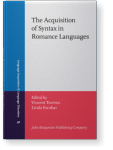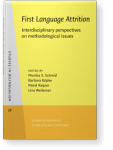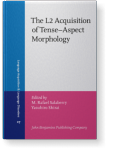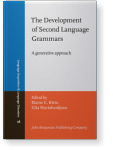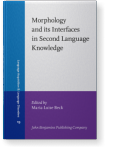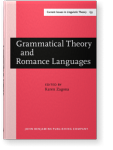Silvina Montrul
List of John Benjamins publications for which Silvina Montrul plays a role.
Book series
The Acquisition of Differential Object Marking
Edited by Alexandru Mardale and Silvina Montrul
[Trends in Language Acquisition Research, 26] 2020. vi, 369 pp.
Subjects Language acquisition | Morphology | Semantics | Syntax
Romance Linguistics 2008: Interactions in Romance. Selected papers from the 38th Linguistic Symposium on Romance Languages (LSRL), Urbana-Champaign, April 2008
Edited by Karlos Arregi, Zsuzsanna Fagyal, Silvina Montrul and Annie Tremblay
[Current Issues in Linguistic Theory, 313] 2010. vii, 266 pp.
Subjects Generative linguistics | Romance linguistics | Theoretical linguistics
Incomplete Acquisition in Bilingualism: Re-examining the Age Factor
Silvina Montrul
[Studies in Bilingualism, 39] 2008. x, 312 pp.
Subjects Cognition and language | Cognitive psychology | Language acquisition | Multilingualism | Psycholinguistics | Theoretical linguistics
Inquiries in Linguistic Development: In honor of Lydia White
Edited by Roumyana Slabakova, Silvina Montrul and Philippe Prévost
[Not in series, 133] 2006. vi, 363 pp.
Subjects Language acquisition | Language teaching | Multilingualism | Theoretical linguistics
The Acquisition of Spanish: Morphosyntactic development in monolingual and bilingual L1 acquisition and adult L2 acquisition
Silvina Montrul
[Language Acquisition and Language Disorders, 37] 2004. xvi, 413 pp.
Subjects Language acquisition | Morphology | Multilingualism | Romance linguistics | Syntax
2024 Relative clauses in child heritage speakers of Turkish in the United States Linguistic Approaches to Bilingualism 14:2, pp. 218–254 | Article
How does complex syntax develop in heritage language children? This study investigates child Turkish heritage speakers’ comprehension and production of relative clauses (RCs) in Turkish and in English. RCs vary on their syntactic functions (subject, object) and show asymmetric patterns of… read more
2024 Chapter 2. The Literacy Enhancement Hypothesis in bilingual language development Multilingual Acquisition and Learning: An ecosystemic view to diversity, Babatsouli, Elena (ed.), pp. 60–89 | Chapter
The Literacy Enhancement Hypothesis states that the development of literacy skills and exposure to textual input during the school-age period leads to more robust linguistic representations of morphosyntactic structures that strengthen psycholinguistic processing mechanisms such as working… read more
2023 Property-by-property transfer in L3 Italian L3 Development After the Initial State, Brown-Bousfield, Megan M., Suzanne Flynn and Éva Fernández-Berkes (eds.), pp. 236–271 | Chapter
According to the Linguistic Proximity Model (Westergaard et al., 2017), linguistic structure is the chief factor which conditions transfer on a property-by-property basis in L3 acquisition. The present study examined the predictions of this model in the L2 and L3 acquisition of Italian by… read more
2023 Does your regional variety help you acquire an additional language? Spanish differential object marking in Northern and Southern Italians Structural similarity across domains in third language acquisition, Kolb, Nadine, Natalia Mitrofanova and Marit Westergaard (eds.), pp. 663–692 | Article
This study investigates Differential Object Marking (DOM) in Italian speakers from two dialectal areas–North and South Italy–learning Spanish. Southern Italo-Romance varieties exhibit a DOM system through a-marking, like Spanish, whereas the Northern varieties, like Standard Italian, only allow… read more
2022 Heritage language speakers inform the critical period hypothesis for first and second language acquisition Generative SLA in the Age of Minimalism: Features, interfaces, and beyond, Leal, Tania, Elena Shimanskaya and Casilde A. Isabelli (eds.), pp. 265–286 | Chapter
This chapter considers how heritage language speakers, bilinguals exposed to their L1 since birth either exclusively or simultaneously with the majority language, shed new light on the role of age in language acquisition. Investigating the ultimate attainment of bilinguals with early and late… read more
2020 Chapter 10. Comprehension of Differential Object Marking by Hindi heritage speakers The Acquisition of Differential Object Marking, Mardale, Alexandru and Silvina Montrul (eds.), pp. 261–281 | Chapter
We investigated the comprehension of Differential Object Marking (DOM) in Hindi heritage speakers who are second generation immigrants in the United States. In Hindi, DOM is marked with the postposition -ko, which is also a marker of dative case with indirect objects. Studies of Hindi heritage… read more
2020 Introduction: Differential Object Marking and its acquisition in different languages and contexts The Acquisition of Differential Object Marking, Mardale, Alexandru and Silvina Montrul (eds.), pp. 1–20 | Chapter
This volume brings together a selection of papers that were presented at the international workshop on the acquisition of Differential Object Marking (DOM) organized by Alexandru Mardale (INaLCO, SeDyL) in Paris on December 10, 2016 as part of the Unity and diversity in Differential Object Marking… read more
2020 Chapter 11. Differential Object Marking in Romanian as a heritage language The Acquisition of Differential Object Marking, Mardale, Alexandru and Silvina Montrul (eds.), pp. 283–312 | Chapter
This cross-generational study investigated the potential vulnerability of DOM in the oral production of Romanian heritage speakers as a function of age of onset of bilingualism (simultaneous vs. sequential bilinguals). In Romanian DOM marking generally co-exists with accusative clitic doubling (CD). read more
2019 An experimental investigation of differential object marking in Mexican Spanish Spanish in Context 16:1, pp. 22–50 | Article
Differential Object Marking (DOM) is a phenomenon widely attested in Spanish. In two experimental studies using production and acceptability judgments we examined the extent to which Mexican Spanish presents some variation among monolingual speakers with respect to expansion of DOM. We tested… read more
2019 The acquisition of differential object marking in Spanish by Romanian speakers Revista Española de Lingüística Aplicada/Spanish Journal of Applied Linguistics 32:1, pp. 185–219 | Article
The obligatory use of the preposition ‘a’ with animate, specific direct objects in Spanish (Juan conoce a María “Juan knows Maria”) is a well-known instance of Differential Object Marking (dom). This study investigates the acquisition of dom by native speakers of Romanian learning Spanish.… read more
2019 Chapter 11. Heritage language development and the promise of Processability Theory Teachability and Learnability across Languages, Arntzen, Ragnar, Gisela Håkansson, Arnstein Hjelde and Jörg-U. Keßler (eds.), pp. 237–259 | Chapter
Heritage language acquisition is a type of early bilingual acquisition that takes place in a specific sociolinguistic environment. The heritage language is a societal minority language, acquired as a first language, either by itself or simultaneously with the majority language. Very often the… read more
2018 Chapter 6. The Bottleneck Hypothesis extends to heritage language acquisition Meaning and Structure in Second Language Acquisition: In honor of Roumyana Slabakova, Cho, Jacee, Michael Iverson, Tiffany Judy, Tania Leal and Elena Shimanskaya (eds.), pp. 149–177 | Chapter
The Bottleneck Hypothesis (Slabakova, 2008) aims to predict which aspects of the grammatical architecture are particularly problematic in second language grammars. When comparing the acquisition of the different linguistic modules, L2 learners appear to struggle more with morphology – the… read more
2017 The acquisition of rhotics by child L2 and L3 learners Journal of Second Language Pronunciation 3:2, pp. 242–266 | Article
This study investigated how previous linguistic experience and universal strategies guide the acquisition of phonology in the classroom. More specifically, it focused on the possible advantages that bilingual children have over monolingual children. Thirty-four children completed a picture-naming… read more
2016 The causative/inchoative morphology in L2 Turkish under the Feature Reassembly Approach Second Language Acquisition of Turkish, Gürel, Ayşe (ed.), pp. 107–133 | Article
According to the Feature Reassembly Hypothesis (Lardiere 2009), L2 learners must acquire, reassembly, or reconfigure features into lexical items in the L2 from the way represented and bundled in their L1. This study extends this approach to the acquisition of two classes of causative verbs – change… read more
2016 Losing your case? Dative experiencers in Mexican Spanish and heritage speakers in the United States Advances in Spanish as a Heritage Language, Pascual y Cabo, Diego (ed.), pp. 99–124 | Article
This chapter examines the gradual loss of dative case marking with dative experiencer verbs among Spanish heritage speakers of Mexican-American origin, first generation adult immigrants from Mexico, and two control groups of Spanish native speakers from Mexico tested in Mexico. According to the… read more
2016 Comprehension of subject and object relative clauses by second language learners of Spanish Language Acquisition Beyond Parameters: Studies in honour of Juana M. Liceras, Alba de la Fuente, Anahí, Elena Valenzuela and Cristina Martínez Sanz (eds.), pp. 149–185 | Article
This study investigates the aural comprehension of Spanish subject and object relative clauses in second language (L2) learners of intermediate and advanced proficiency in cases where the position of the subject, the object and the verb vary within the complementizer phrase (CP). Subject and object… read more
2015 Interpretation of NPs in generic and existential contexts in L3 Brazilian Portuguese Linguistic Approaches to Bilingualism 5:2, pp. 215–251 | Article
This paper examines the interpretation of NPs in generic and existential contexts in the acquisition of Brazilian Portuguese (BrP) as a third language (L3) by learners who speak English and a Romance language (Spanish, French or Italian). The paper examines whether transfer / cross-linguistic… read more
2015 The Acquisition of Differential Object Marking in Spanish by Turkish speakers The Acquisition of Spanish in Understudied Language Pairings, Judy, Tiffany and Silvia Perpiñán (eds.), pp. 281–308 | Article
The obligatory use of the preposition ‘a’ with animate, specific direct objects in Spanish (Juan conoce a María ‘Juan knows Maria’) is a well-known instance of Differential Object Marking (DOM). This study investigates the acquisition of DOM in Spanish by native speakers of Turkish, a language that… read more
2014
This study investigates heritage speakers’ knowledge of plural formation in their colloquial varieties of Arabic, which use both concatenative and non-concatentative modes of derivation. In the concatenative derivation, a plural suffix attaches to the singular stem (muhandis ‘engineer-sg.’ →… read more
2014 Chapter 4. Interlanguage, transfer and fossilization: Beyond second language acquisition Interlanguage: Forty years later, Han, ZhaoHong and Elaine Tarone (eds.), pp. 75–104 | Chapter
Selinker’s (1972) Interlanguage proposal lies at the heart of linguistic approaches to adult second language acquisition, especially subsumed under the theory of Universal Grammar. Much research in recent years has directly addressed the what, how, and why of transfer and fossilization, yet these… read more
2013 First language retention and attrition in an adult Guatemalan adoptee First Language Attrition, Schmid, Monika S. and Barbara Köpke (eds.), pp. 91–126 | Article
This case study illustrates the long-term effects of interrupted input and subsequent re-exposure to the first language in childhood in the adult linguistic competence of an internationally adopted individual. Alicia — the subject of the case study — is a 34-year-old Guatemalan adopted by an… read more
2012 Is the heritage language like a second language? EUROSLA Yearbook: Volume 12 (2012), Roberts, Leah, Christina Lindqvist, Camilla Bardel and Niclas Abrahamsson (eds.), pp. 1–29 | Article
Many heritage speakers (bilinguals in a minority language context) turn to the second language (L2) classroom to expand their knowledge of the heritage language. Critical questions arise as to how their linguistic knowledge compares to that of post puberty L2 learners. Focusing on recent… read more
2012
Recent research has identified several vulnerable areas in heritage language grammars, among which morphosyntax is among the most affected. In this study, we report on the morphosyntactic competence of Hindi heritage speakers living in the U.S and show that these speakers have representational… read more
2011 First language retention and attrition in an adult Guatemalan adoptee First language attrition/L'attrition de la langue première, Schmid, Monika S. and Barbara Köpke (eds.), pp. 276–311 | Article
This case study illustrates the long-term effects of interrupted input and subsequent re-exposure to the first language in childhood in the adult linguistic competence of an internationally adopted individual. Alicia — the subject of the case study — is a 34-year-old Guatemalan adopted by an… read more
2009 Article use and generic reference: Parallels between L1- and L2-acquisition Second Language Acquisition of Articles: Empirical findings and theoretical implications, García Mayo, María del Pilar and Roger Hawkins (eds.), pp. 147–173 | Article
2007 2. Interpreting mood distinctions in Spanish as a heritage language Spanish in Contact: Policy, Social and Linguistic Inquiries, Potowski, Kim and Richard Cameron (eds.), pp. 23–40 | Article
This chapter focuses on the mental representation of mood in Spanish heritage speakers (2nd generation immigrants of Spanish background living in the US). A variety of studies have amply documented the loss and/or incomplete acquisition of subjunctive mood in these speakers (Merino 1983, Lipski… read more
2006 Incomplete acquisition in bilingualism as an instance of language change L2 Acquisition and Creole Genesis: Dialogues, Lefebvre, Claire, Lydia White and Christine Jourdan (eds.), pp. 379–400 | Article
2006 Incomplete acquisition as a feature of bilingual and L2 grammars Inquiries in Linguistic Development: In honor of Lydia White, Slabakova, Roumyana, Silvina Montrul and Philippe Prévost (eds.), pp. 335–359 | Article
2006 Beyond the syntax of the Null Subject Parameter: A look at the discourse-pragmatic distribution of null and overt subjects by L2 learners of Spanish The Acquisition of Syntax in Romance Languages, Torrens, Vincent and Linda Escobar (eds.), pp. 401–418 | Article
This study investigates whether and how English-speaking L2 learners at various proficiency levels acquire the morphosyntactic and discourse-pragmatic properties of subject expression in Spanish. The crucial question is whether discourse-pragmatic properties are acquired together with syntactic… read more
2006 Inquiries in linguistic development: Studies in honor of Lydia White Inquiries in Linguistic Development: In honor of Lydia White, Slabakova, Roumyana, Silvina Montrul and Philippe Prévost (eds.), pp. 1–13 | Article
2004 Convergent outcomes in L2 acquisition and L1 loss First Language Attrition: Interdisciplinary perspectives on methodological issues, Schmid, Monika S., Barbara Köpke, Merel Keijzer and Lina Weilemar (eds.), pp. 259–279 | Article
2002 12. On viewpoint aspect interpretation and its L2 acquisition: A UG perspective The L2 Acquisition of Tense–Aspect Morphology, Salaberry, M. Rafael and Yasuhiro Shirai (eds.), pp. 363–396 | Chapter
1999 Activating AgrIOP in Second Language Acquisition The Development of Second Language Grammars: A generative approach, Klein, Elaine C. and Gita Martohardjono (eds.), pp. 81–108 | Article
1999 Psych verbs In Second Language Acquisition The Development of Second Language Grammars: A generative approach, Klein, Elaine C. and Gita Martohardjono (eds.), pp. 171–196 | Article
1998 Zero Morphology and the T/SM Restriction in the L2 Acquisition of Psych Verbs Morphology and its Interfaces in Second Language Knowledge, Beck, Maria-Luise (ed.), pp. 257–282 | Article
1996 Clitic-doubled dative “subjects” in Spanish Grammatical Theory and Romance Languages: Selected papers from the 25th Linguistic Symposium on Romance Languages (LSRL XXV) Seattle, 2–4 March 1995, Zagona, Karen (ed.), pp. 183–196 | Article
